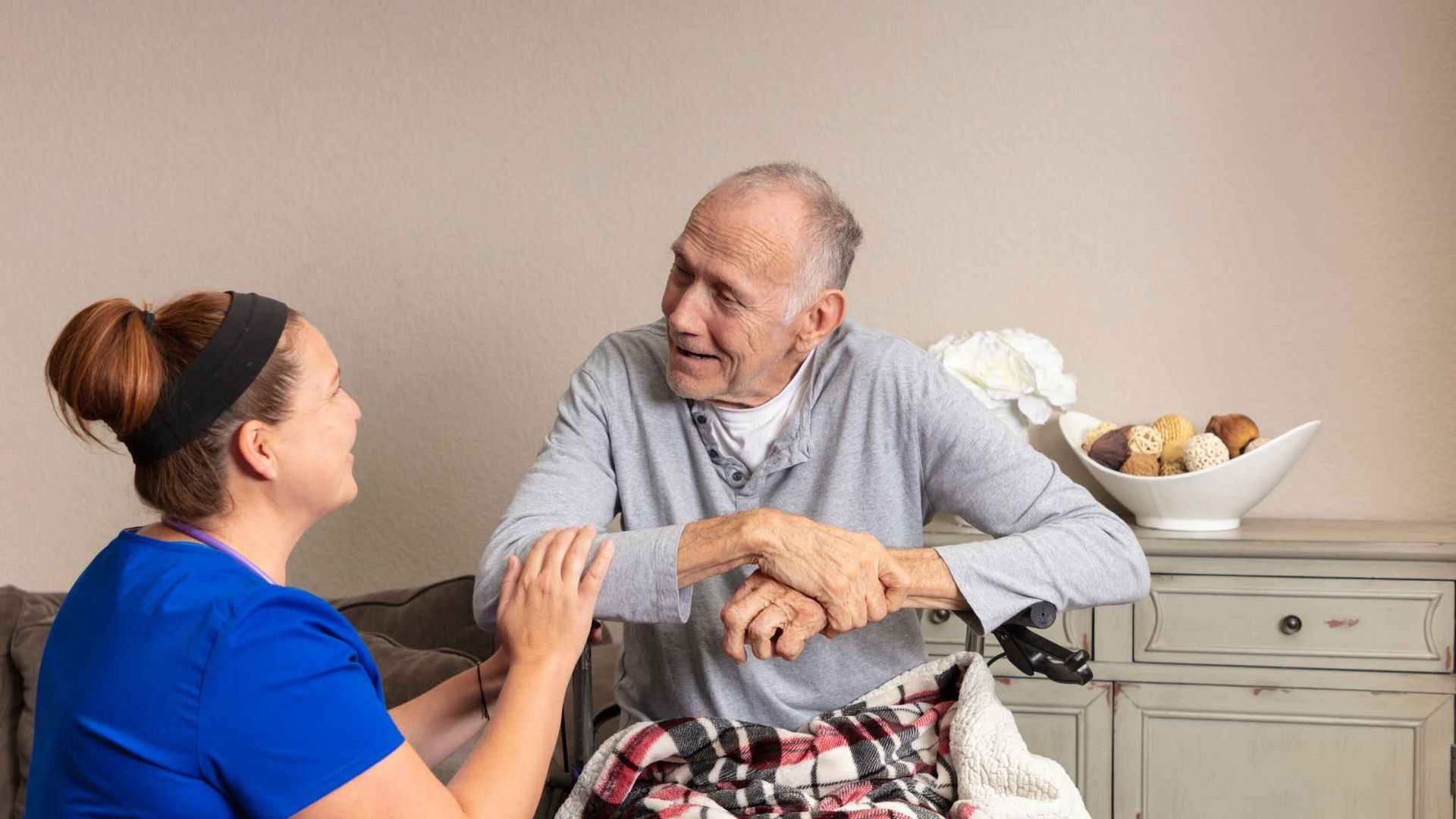What Qualifies for Inpatient Hospice Care?
When a loved one faces worsening symptoms that are difficult to manage at home, families can feel overwhelmed by uncertainty and fear.
Inpatient hospice care offers critical relief during these moments, providing expert medical supervision and a supportive environment where comfort and dignity are prioritized.
In this article, we’ll cover what qualifies for inpatient hospice care, when it’s necessary, and how it works alongside other levels of hospice support to ensure your loved one’s needs are fully met.
What Is an Inpatient Hospice?
Inpatient hospice care provides 24/7 medical support and pain management for patients facing severe symptoms in the final years of their lives. Unlike routine hospice care, it takes place in specialized facilities, hospitals, or nursing homes, ensuring both medical attention and emotional comfort.
These centers specialize in creating a home-like environment where patients receive expert care with dignity and compassion, and the goal is to ease acute symptoms so patients can either return home or stay in a peaceful setting. Doctors, hospice teams, patients, and families work together to make the best care decisions.
The Four Levels of Hospice Care
Here’s a quick guide to know which level of hospice care care is right for your loved one:
Routine Hospice Care: Comfort in Familiar Surroundings
For patients with stable symptoms, routine hospice care allows them to remain at home, in an assisted living facility, or in a nursing home. A dedicated team that includes nurses, home health aides, social workers, and chaplains—provides scheduled visits to manage pain, offer emotional support, and enhance quality of life. This approach ensures that patients receive expert care while staying in a familiar, comforting environment.
Continuous Hospice Care: Intensive Support at Home
When a patient experiences a medical crisis, continuous hospice care delivers urgent, around-the-clock monitoring at home. Nurses and aides provide 24/7 care to manage severe pain, agitation, or respiratory distress, helping patients stay in a familiar space while avoiding hospitalization. This level of care offers families peace of mind and provides the familiarity and security that are important to an elderly person undergoing illness, knowing their loved one is receiving immediate, skilled attention in their most comfortable setting.
General Inpatient Care: Advanced Symptom Management
Sometimes, a patient’s symptoms become too complex to manage at home. General inpatient hospice care provides 24-hour medical supervision in a hospice facility, hospital, or skilled nursing home. Understanding what qualifies for inpatient hospice care is important, as this level of support is essential for patients experiencing severe nausea, uncontrolled pain, seizures, or other acute conditions. It is especially suited for elderly loved ones who need to stabilize symptoms in a supportive setting.
Respite Care: Support for Caregivers
Caring for a loved one is an act of love, but it can also be physically and emotionally exhausting. Respite care offers short-term relief by admitting the patient to a hospice facility or hospital for up to five days, giving family caregivers a chance to rest and recharge. With this support, caregivers can take time for themselves, knowing their loved one is in trusted hands.
What Qualifies for Inpatient Hospice Care?
If someone you care about experiences escalated symptoms that can no longer be handled safely and effectively, it may be best to consider inpatient hospice care. Particularly, these specific conditions may prompt such specialized care:
- Severe, unmanageable pain requiring continuous IV medications.
- Acute agitation or restlessness that causes distress to the patient and family.
- Uncontrolled nausea, vomiting, or diarrhea leading to dehydration and weakness.
- Respiratory distress, such as frequent choking, severe shortness of breath, or the need for high-flow oxygen.
- Advanced wound care needs.
- Pathological fractures or sudden physical deterioration that make movement painful or dangerous.
Inpatient care is typically temporary, designed to stabilize the patient’s condition before transitioning them back to routine hospice care at home if possible.
How Long Can a Hospice Patient Stay in the Hospital?
Hospice inpatient stays are generally short-term and focused on managing symptoms. The duration depends on factors such as:
- How quickly symptoms stabilize under inpatient care.
- The patient’s response to treatment and whether they can transition to home care.
- The availability of caregivers and home hospice support.
Once symptoms improve, the patient is discharged home under routine or continuous hospice care. If symptoms remain severe, inpatient care may continue as long as medically necessary.
Who Pays for Inpatient Hospice Care?
Hospice care, including inpatient stays, is covered under most insurance plans. Payment options include:
- Medicare Hospice Benefit (100% coverage for eligible patients).
- Medicaid (coverage varies by state but often includes hospice services).
- Private insurance (coverage details depend on the policy).
- Charitable hospice organizations may offer financial assistance for uninsured patients. Hospice Foundation of America, Hospice Help Foundation, and Hospice Angels Foundation, are a few examples of these charitable organizations.
It’s important to consult with a hospice provider to understand coverage details and any potential out-of-pocket costs.
Palliative Care vs. Hospice Care
Many people confuse hospice and palliative care, but they serve different purposes, essentially based on a patient’s current condition and life expectancy:
- Palliative care provides symptom management at any stage of illness, even during curative treatment.
- Hospice care is for patients with a life expectancy of six months or less, focusing on comfort rather than curative treatment.
Supporting You with Care, Dignity, and Peace
Understanding what qualifies for inpatient hospice care helps families make informed, compassionate decisions for their loved ones. Whether a patient receives care at home or in a specialized facility, the goal remains the same: comfort, dignity, and quality of life.
Questions about hospice care and eligibility, as they come with uncertainty and worry, deserve to be addressed with compassion and competence, delivering needed assurance to families and caregivers.
At
Valley Oaks Hospice, we are committed to providing this kind of care to support you and your loved ones during life's most tender moments. Our team of experienced professionals is available 24/7 to make your comfort, dignity, and quality of life our mission.
Contact us today.












